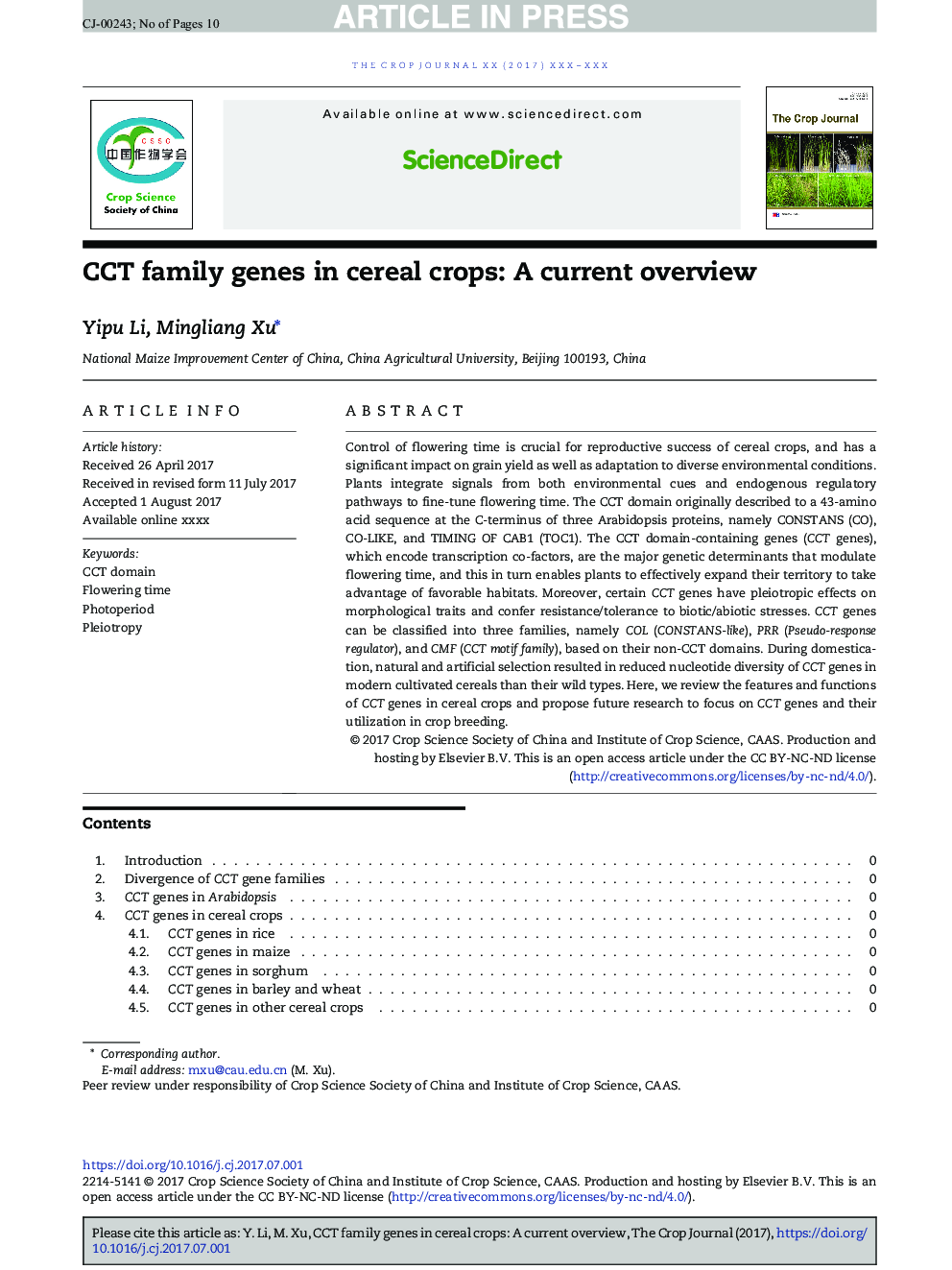| Article ID | Journal | Published Year | Pages | File Type |
|---|---|---|---|---|
| 8408809 | The Crop Journal | 2017 | 10 Pages |
Abstract
Control of flowering time is crucial for reproductive success of cereal crops, and has a significant impact on grain yield as well as adaptation to diverse environmental conditions. Plants integrate signals from both environmental cues and endogenous regulatory pathways to fine-tune flowering time. The CCT domain originally described to a 43-amino acid sequence at the C-terminus of three Arabidopsis proteins, namely CONSTANS (CO), CO-LIKE, and TIMING OF CAB1 (TOC1). The CCT domain-containing genes (CCT genes), which encode transcription co-factors, are the major genetic determinants that modulate flowering time, and this in turn enables plants to effectively expand their territory to take advantage of favorable habitats. Moreover, certain CCT genes have pleiotropic effects on morphological traits and confer resistance/tolerance to biotic/abiotic stresses. CCT genes can be classified into three families, namely COL (CONSTANS-like), PRR (Pseudo-response regulator), and CMF (CCT motif family), based on their non-CCT domains. During domestication, natural and artificial selection resulted in reduced nucleotide diversity of CCT genes in modern cultivated cereals than their wild types. Here, we review the features and functions of CCT genes in cereal crops and propose future research to focus on CCT genes and their utilization in crop breeding.
Keywords
Related Topics
Life Sciences
Agricultural and Biological Sciences
Agronomy and Crop Science
Authors
Yipu Li, Mingliang Xu,
